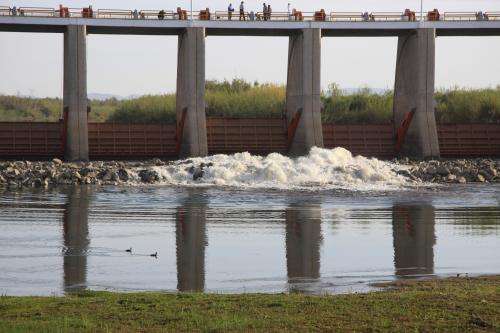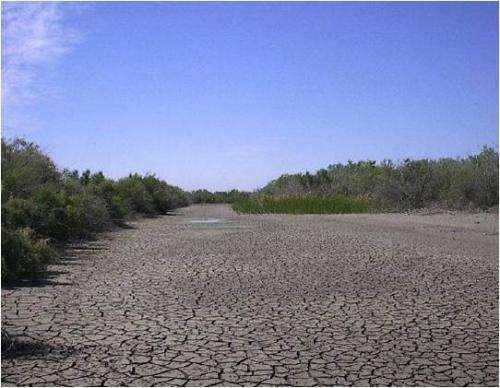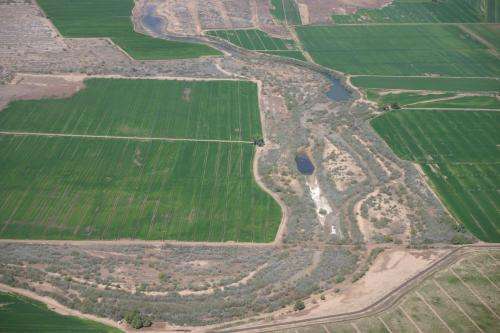Researchers evaluate unprecedented environmental flow to Colorado Delta

University of Arizona scientists Karl Flessa and Ed Glenn and a binational team of scientists will monitor the effects of an engineered spring flood to bring water to the parched Colorado River delta.
The pulse flow of water into the dry lower reaches of the Colorado River began Sunday.
"This allocation of environmental water to the Colorado River Delta in Mexico is unprecedented," said Flessa, UA professor of geosciences and co-chief scientist of the monitoring effort. "We need to learn how to actively manage habitats at this scale. The scientific monitoring of the pulse flow and its aftermath will help us do so."
Upstream dams and water diversions for farms and cities in both countries have dried up most of the river south of the border. With the exception of a few wet years, the river has not reached the Gulf of California since 1960.
The U.S. and Mexico will release about 105,000 acre-feet of water, approximately 0.7 percent of the river's annual flow, into the delta below Morelos Dam, which straddles the U.S.-Mexico border just west of Yuma. An acre-foot of water is 325,900 gallons.
"We're trying to simulate a spring flood, even though the amount of water is small compared to the natural spring floods of the era before the dams, when the river regularly flowed over its banks and formed extensive wetlands and forests of cottonwoods," Flessa said.

This engineered spring flood is one outcome of Minute 319, a 2012 addition to the 1944 U.S.-Mexico Water Treaty.
The agreement is a framework for cooperation that provides multiple benefits for Colorado River water users in both countries, including environmental flows to the delta. Minute 319 identifies criteria for sharing of future water shortages and surpluses between the two countries, allows storage of Mexican water in Lake Mead and funds improvements to Mexican irrigation infrastructure.
The five-year program to monitor the environmental results of the pulse flow is being supported by government agencies and environmental groups in both countries, under the auspices of the International Boundary and Water Commission.
The monitoring team includes scientists from the UA, the Universidad Autónoma de Baja California, the U.S. Geological Survey, the U.S. Bureau of Reclamation, The Nature Conservancy, the Tucson-based Sonoran Institute and the Ensenada-based Pronatura Noroeste.
"The pulse flow is a vital part of our ongoing restoration efforts. We know that relatively small amounts of water can make a big difference in the health of the delta region," said Francisco Zamora Arroyo, director of the Colorado River Delta Legacy Program at the Sonoran Institute.

Glenn, a UA professor emeritus of soil, water and environmental science, is leading the vegetation and remote-sensing teams. The pulse flow is designed to stimulate the growth of the delta's natural vegetation by dispersing native seeds and fostering their growth by raising the water table in the vicinity of the river's now-dry channel.
New growth will create the habitats that support wildlife. Close to 380 bird species are expected to benefit from this return of water to the delta, said UA alumnus Osvel Hinojosa, the water and wetlands program director at Pronatura Noroeste.
"We're all energized by such big science that could have such a big outcome for restoration on the delta and in dryland rivers elsewhere," Flessa said. "Ed Glenn and I have been working on the delta for more than 20 years and this is a dream come true. People told us this would never happen – and here it is."
Provided by University of Arizona


















